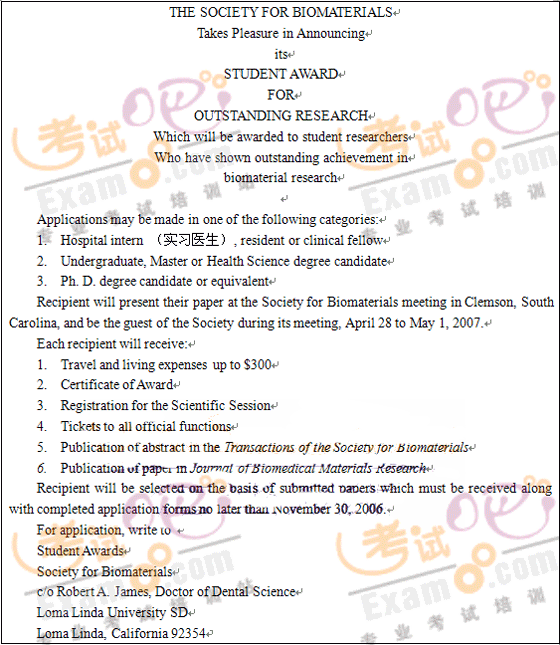19. What will be the astronautsĪ» top priorities?
A. Entering the orbit and landing on the moon.
B. Landing and walking on the moon surface.
C. Exploration and researches into the moon composition.
D. Exploration and construction of a moon base.
20. The reason why NASA hopes to carry out at least two moon missions a year starting in 2018 is to ________.
A. ensure the moon traveling and the moon base construction
B. speed up the moon base construction and other activities
C. guarantee the quality of the researchersĪ» scientific study
D. set up new training laboratories for future missions to Mars
Questions 21-25 are based on the following passage:
At the end of the U.S. Civil War, about 4 million slaves were freed. Now, people around the world can hear some of the former slavesĪ» stories for the first time ever, as told in their own voices.
Ī░That was in slavery time,Ī▒ says Charlie Smith in one interview. Ī░They sold the colored people. And they were bringing them from Africa. They brought me from Africa. I was a child.Ī▒
The Library of Congress released the collection of recordings, Voices from the Days of Slavery, in January. The recordings were made between 1932 and 1975. Speaking at least 60 years after their emancipation (ĮŌĘ┼), the storytellers discuss their experiences as slaves. They also tell about their lives as free men and women.
Isom Moseley was just a boy at the time of emancipation, but he recalls that things were slow to change. Ī░It was a year before the folks knowed they was free,Ī▒ he says.
Michael Taft, the head of the libraryĪ»s archive of folk culture, says the recordings reveal something that written stories cannot. Ī░The power of hearing someone speak is so much greater than reading something from the page,Ī▒ Taft says. Ī░ItĪ»s how something is said---the dialect, the low pitches, the pauses---that helps tell the story.Ī▒
21. What is new about the slavesĪ» stories?
A. They are told in the slavesĪ» own voices.
B. People travel around the world to hear them.
C. Colored people were sold.
D. They happened in the slavery time.
22. What is the title of the collection of recordings?
A. The End of the U.S. Civil War.
B. The Library of Congress
C. Voices from the Days of Slavery.
D. The Recordings of Written Stories.
23. How many years did it take to complete the collection of recordings?
A. 26 years. B. 33 years
C. 44 years D. 57 years.
24. What do the storytellers tell us about?
A. How they were brought to the United States from Africa.
B. The release of the collection of recordings.
C. What happened 60 years after their emancipation?
D. Their experiences as slaves and their lives as free men and women.
25. The recordings differ from written stories in that ________.
A. the tellers and the government are contributing together
B. the dialect, the low pitches, and the pauses are more revealing
C. the hearing and reading both help tell the stories
D. the power of watching someone write is more engaging.
Questions 26-30 are based on the following announcement:

26. In order to be chosen, applicants must send in ________ before Nov. 30, 2006.
A. their papers and application forms
B. their papers and degree certificates
C. their application forms and diplomas
D. their applications and registrations




